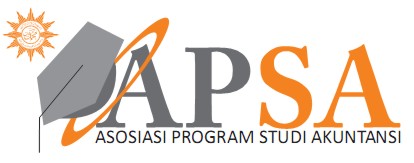Analysis of potential carbon tax calculation schemes for steam power plant company registered on the Indonesia stock exchange
DOI:
https://doi.org/10.18196/jai.v26i1.23245Keywords:
Cap and tax, Cap and trade, Carbon Credit, Carbon Tax Scheme, SPPC Carbon EmissionsAbstract
Research aims: This research aims to select the best scheme—carbon tax or carbon credits—based on Cap and Tax and Cap and Trade for Steam Power Plant Company (SPPC) listed on the Indonesia Stock Exchange (IDX), following the carbon tax requirement under the Harmonization of Tax Regulations Law Number 7 of 2021.
Design/Methodology/Approach: This study employs qualitative descriptive analysis to simulate carbon tax calculations based on the minimum rates outlined in Indonesian regulations or to assess the cost of purchasing carbon credits, with the goal of identifying the most efficient scheme in accordance with the carbon market regulations set by the Financial Services Authority (FSA).
Research findings: The analysis results show that paying for carbon is the right choice for SPPC because the cash spent is lower than buying an Emission Reduction Certificate (ERC).
Theoretical contribution/ Originality: This study compares carbon tax payments and Emission Reduction Certificate (ERC) purchases in Indonesia, reinforcing legitimacy theory on taxpayer compliance and informing government tax policy. It also encourages public support for the Nationally Determined Contribution (NDC) policy.
Practitioner/Policy implication: This study provides input for organizations in policy-making related to emission reduction obligations and supports the government's Economic Value of Carbon (EVC) policy, aiding infrastructure development and the goal of Net Zero Emissions.
Research limitation/Implication: The data obtained was only 3 companies that had complete emissions reports from 2020 to 2022, but even though only 3 companies were able to reflect the choice of whether to pay carbon tax or buy ERC.
References
Aji, N. P., Rahman, F. A., A’zizah, L. O. F., & Widawati, M. W. (2023). Carbon emission disclosure: the influence of external stakeholder preassure and environment performance. International Journal of Social Science, Education, Communication and Economics (SINOMICS JOURNAL), 2(3), 687–700. https://sinomicsjournal.com/index.php/SJ/article/view/125%0Ahttps://sinomicsjournal.com/index.php/SJ/article/download/125/160
Ariani, K. R., Rita Wijayanti, Mujiyati, Farid Adi Prasetyo, & Maria Cristina M. De los Santos. (2023). Board of Commissioners’ Relationship and Climate Change Disclosure: Evidence from Mining Companies. Riset Akuntansi Dan Keuangan Indonesia, 8(2), 218–227. https://doi.org/10.23917/reaksi.v8i2.3047
Budi, R. F. S., & Suparman. (2013). Perhitungan faktor emisi CO2 SPPC batubara dan PLTN. Jurnal Pembangunan Energi Nuklir, 15(1), 1–8.
Brilliani, B., Setianingtyas Honggowati, & Christiyaningsih Budiwati. (2024). Voluntary Disclosure: The Role of Institutional Ownership as a Moderating Variable Between Carbon Emission Disclosure to Financial Performance. Riset Akuntansi Dan Keuangan Indonesia, 8(3), 248–260. https://doi.org/10.23917/reaksi.v8i3.3060
Calderón, S., Alvarez, A. C., Loboguerrero, A. M., Arango, S., Calvin, K., Kober, T., Daenzer, K., & Fisher-Vanden, K. (2014). Achieving CO2 reductions in Colombia: Effects of carbon taxes and abatement targets. Energy Economics, 56, 575–586. https://doi.org/10.1016/j.eneco.2015.05.010
Creswell, J. W. (2007). Qualitative Inquiry & Research Design: Choosing Among Five Approaches (2nd ed.). Sage Publications.
Darajati, Nugroho, D., & Rianto, A. (2022). Strategi Indonesia Dalam Mengurangi Emisi Karbon Dioksida (Co2) Di Masa New Normal. Prosiding Ilmu Pemerintahan, 1(1), 228–242. https://e-journal.umc.ac.id/index.php/IP/article/view/2712
Dilasari, A. P., Ani, H. N., & Rizka, R. J. H. (2022). Analisis Best Practice Kebijakan Carbon Tax Dalam Mengatasi Eksternalitas Negatif Emisi Karbon Di Indonesia. Owner, 7(1), 184–194. https://doi.org/10.33395/owner.v7i1.1182
Durant, I., Contreras, C., Hamwey, R., Mott, G., Nicita, A., Peters, R., Razo, C., & Vivas, D. (2021). A European Union Carbon Border Adjustment Mechanism: Implications for developing countries. United Nations Conference on Trade and Development, July.
Hájek, M., Zimmermannová, J., Helman, K., & Rozenský, L. (2019). Analysis of carbon tax efficiency in energy industries of selected EU countries. Energy Policy, 134(June 2018), 110955. https://doi.org/10.1016/j.enpol.2019.110955
Indonesia, P. P. R. (2021). Peraturan Presiden Republik Indonesia Nomor 98 Tahun 2021. 064979.
Indonesia, P. R. (2021). Undang-Undang Republik Indonesia Nomor 7 Tentang Harmonisasi Peraturan Perpajakan. 224.
Irama, A. B. (2019). Potensi Penerimaan Negara Dari Emisi Karbon: Langkah Optimis Mewujudkan Pembangunan Berkelanjutan Di Indonesia. Info Artha, 3(2), 133–142. https://doi.org/10.31092/jia.v3i2.585
Kumala, R., Ulpa, R., Rahayu, A., & Martinah. (2024). Pajak Karbon: Perbaiki Ekonomi dan Solusi Lindungi Bumi. Prosiding Seminar Stiami, 8(1), 66–73.
Lolo, L. D. F. A., Maulana, A. D., & Pasaribu, D. N. (2022). Transparansi Pajak Karbon: Digitalisasi Pajak Karbon Sebagai Katalisator Dalam Pembangunan Rendah Karbon di Indonesia. Jurist-Diction, 5(1), 205. https://doi.org/10.20473/jd.v5i1.32981
Marron, D. B., & Toder, E. J. (2014). Tax policy issues in designing a carbon tax. American Economic Review, 104(5), 563–568. https://doi.org/10.1257/aer.104.5.563
Murray, B., & Rivers, N. (2015). British Columbia’s revenue-neutral carbon tax: A review of the latest “grand experiment” in environmental policy. Energy Policy, 86(May), 674–683. https://doi.org/10.1016/j.enpol.2015.08.011
Panggabean, B. T. G. B. (2021). Kesiapan Indonesia Dalam Memenuhi Nationally Determined Contribution ( Ndc ) Seb Agaiimplement Asi. Dharmasisy, 1(1), 13. https://scholarhub.ui.ac.id/dharmasisya/vol1/iss1/21
Purnomo, A. (2013). Mari Berdagang Karbon. Dewan Nasional Perubahan Iklim.
Ratnawati, D. (2016). Carbon tax sebagai alternatif kebijakan mengatasi eksternalitas negatif emisi karbon di Indonesia. Jurnal Perbendaharaan, Keuangan Negara Dan Kebijakan Publik, 1(2), 53–67.
Saunders, M., Lewis, P., & Thornhill, A. (2009). Research methods for business students, Fithh edition, Prentice Hall. In Research Methods for Business Students (Issue January). www.pearsoned.co.uk%0Awww.pearson.com/uk%0Ahttps://www.amazon.com/Research-Methods-for-Business-Students/dp/1292208783/ref=sr_1_2?dchild=1&qid=1614706531&refinements=p_27%3AAdrian+Thornhill+%2F+Philip+Lewis+%2F+Mark+N.+K.+Saunders&s=books&sr=1-2&text=Adri
Selvi, Notika Rahmi, & Idar Rachmatulloh. (2020). Urgensi Penerapan Pajak Karbon Di Indonesia. Jurnal Reformasi Administrasi, 7(1), 29–34.
Sutartib, M., & Purwana, A. S. (2021). Tantangan Administrasi Pengenaan Pajak Karbon Di Indonesia. Jurnal Anggaran Dan Keuangan Negara Indonesia (AKURASI), 3(2), 38–55. https://doi.org/10.33827/akurasi2021.vol3.iss2.art127
World Bank. (2019). State and Trends of Carbon Pricing 2019. In State and Trends of Carbon Pricing 2016 (Issue June). https://doi.org/10.1596/978-1-4648-1001-5
Zefanya, A., & Kennedy, P. S. J. (2023). Kajian Pelaksanaan Skema Cap and Tax dalam Kebijakan Mitigasi Perubahan Iklim Indonesia. IKRA-ITH HUMANIORA : Jurnal Sosial Dan Humaniora, 7(3), 279–288. https://doi.org/10.37817/ikraith-humaniora.v7i3.3410
Downloads
Published
How to Cite
Issue
Section
License
Copyright (c) 2025 Mujiyati Mujiyati, Santi Putriani, Halwa Qubailah Shobah Ulum, Ovi Itsnaini Ulynnuha, Laila Oshiana Fitria A'zizah

This work is licensed under a Creative Commons Attribution-NonCommercial-NoDerivatives 4.0 International License.
License
 Journal of Accounting and Investment is licensed under Creative Commons Attribution Attribution-NonCommercial-NoDerivatives 4.0 International License.
Journal of Accounting and Investment is licensed under Creative Commons Attribution Attribution-NonCommercial-NoDerivatives 4.0 International License.




